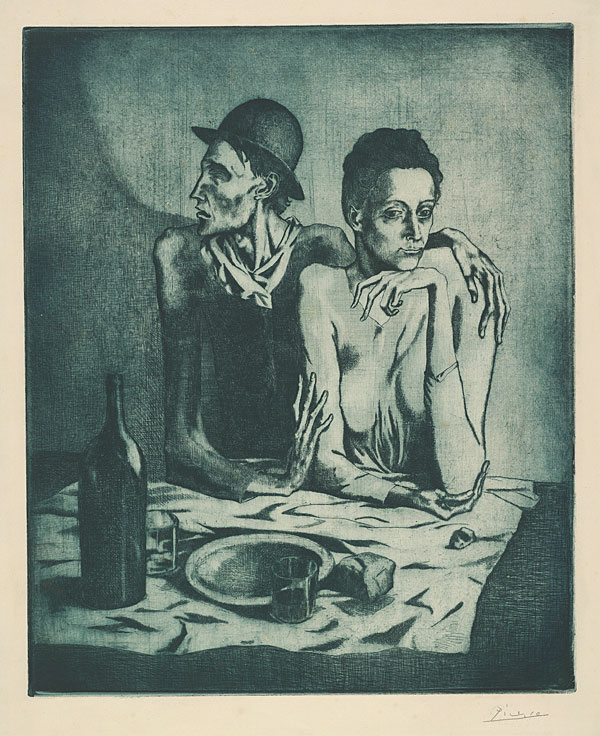
The Art Institute’s exhibition Picasso and Chicago, which opens to the public today, only feels dutiful when it’s hammering home the artist’s connections to Chicago (he never stepped foot here, but Chicago museums, gallerists, and collectors were pivotal enthusiasts of his work). Otherwise, it’s magnificent: Even if you’ve experienced a number of Picasso shows in your lifetime, as many of us have, this one stands out because it follows very clearly, in mostly chronological order, the prodigious artist’s career arc. When it does detour, the curators are exploring the artist’s enthusiasm for experimenting with multiple media—take note, Crate & Barrel fans, of his awesome ceramics period!—and the brilliant cross-pollination that happened as a result. Here are the five such moments that stood out in my mind:
+ Entering the very first gallery, which is an homage to the untitled sculpture that Picasso gifted to the City of Chicago (he refused his $100,000 fee). The museum creatively pipes in sound from interviews that Studs Terkel did with various Chicagoans after the sculpture’s 1967 public unveiling in what would later be called Daley Plaza. You’re reminded that even though it is an icon now, the enigmatic sculpture (is it a dog? An insect?) was controversial at the time.
+ Surveying the passionate artist’s talent for every media imaginable, starting with The Frugal Meal (1904, seen above), which displays his extraordinary mastery of line-drawing even in his early 20s. The exhibition explores his paintings and sculpture, of course, but also his prints, lithographs, and even his whimsical (and until recently, largely forgotten) detour mid-career into ceramics. His breadth, quite simply, is breathtaking.
+ Overhearing the tsk-tsk of other patrons when they realize just how many women Picasso was sleeping with at one time and how they all appeared somewhere or another in his work, seemingly concurrently. “How did he ever have time to make all of this art?” I heard one lady exclaim. She was parked near an intriguing corner of the show that explores his infatuation with 17-year-old Marie-Therese Walter, a curvaceous blonde whom he romanced while still married to his red-haired first wife, the Russian ballerina Olga Khokhlova.
+ Absorbing the mindblowing art history lesson that unfurls via a series of 11 lithographs of The Bull. The 1940s-era series starts with a conventional drawing of the animal, then catapults toward abstraction through the next 10 drawings. The finale is a stripped down bull crafted of only a few lines, its powering simplicity a testament to the Miesian axiom that less is indeed more.
+ Observing the creative energy Picasso soaked up from his friends, lovers, and collaborators, whether they were with bookbinders, poets, well-known artists (El Greco, Man Ray) or the Ballets Russes. It drives home the point that inspiration rarely roots itself in solitude.
Photograph: The Frugal Meal (1904), © 2013 Estate of Pablo Picasso/Artists Rights Society (ARS), New York


